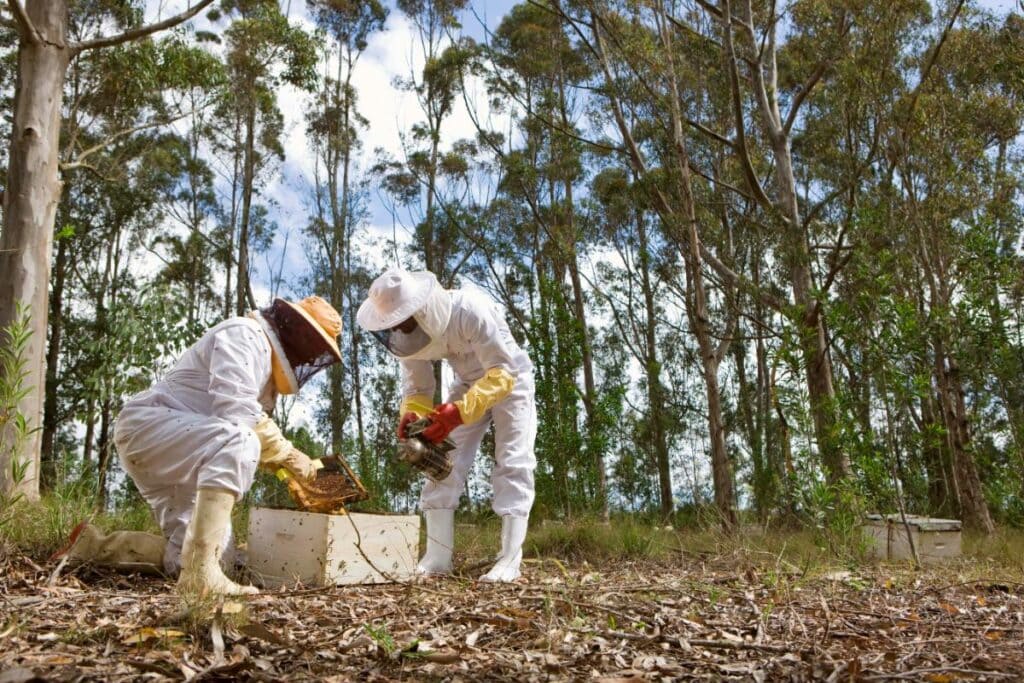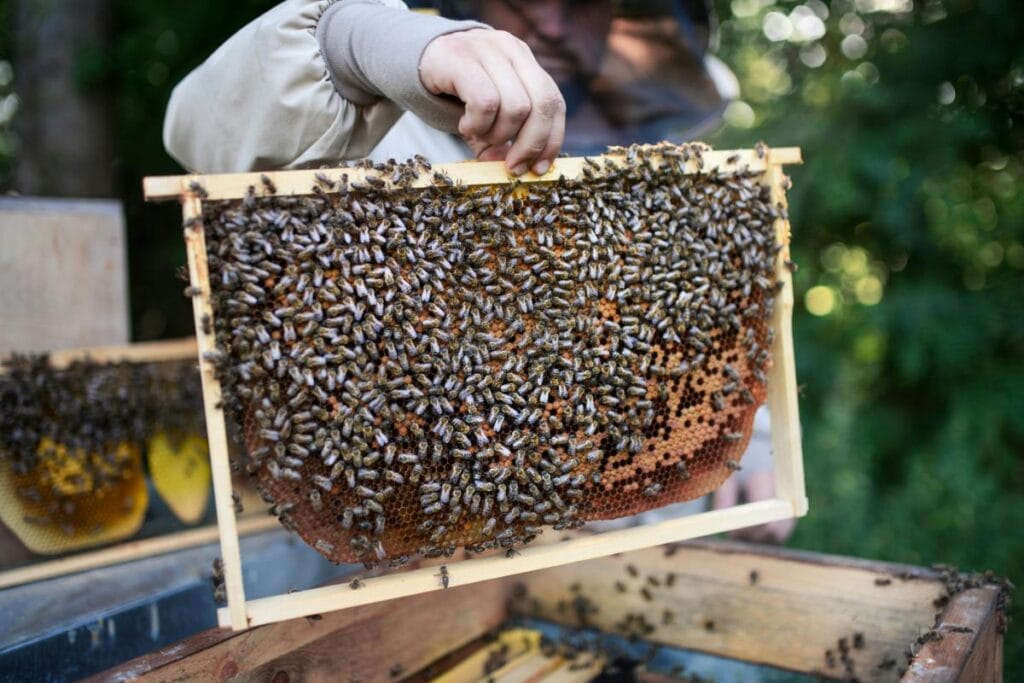
So, you want to start beekeeping. Beekeeping, whether for honey, pollination, or personal interest, can be a rewarding hobby that connects you with nature and supports the environment. However, getting started can feel overwhelming due to the variety of equipment available.
This guide will walk you through the essential beekeeping gear for beginners, explaining what each item is for and how it helps in managing your hive safely and effectively.
Understanding the Basics
Before you buy your first piece of equipment, it’s important to understand the core components of beekeeping. At the heart of it all is the hive, the home for your bees. You’ll also need protective gear to keep yourself safe, a set of tools to inspect and manage your colony, and some supportive items to maintain hive health and help your bees thrive.
Choosing the Right Hive
Your hive is where your bees will build comb, raise brood, and store honey. Two common choices for beginners are the Langstroth hive and the Top-Bar hive.
The Langstroth hive is the most widely used system and consists of stacked boxes with removable frames. It allows for easy honey extraction and scalability. Most beekeeping equipment is designed with this style in mind, making it highly versatile for beginners.
Alternatively, the Top-Bar hive features a horizontal design with bars on which bees build comb naturally. It’s user-friendly and requires less lifting, making it ideal for hobbyists or those with limited space.
Protective Gear for Safe Handling
To stay safe and confident around bees, proper protective clothing is essential. A beekeeping suit or jacket provides full or partial coverage. Most beginners opt for a suit with an attached veil to protect the face and neck, areas most sensitive to stings. Jackets are more lightweight but should still have secure closures and good ventilation.
A standalone veil can also work if you’re wearing thick clothing, but it must fit tightly around the neck to prevent bees from entering. Gloves, either leather or nitrile, offer protection for your hands while still allowing you to handle frames gently. Tall, smooth boots are recommended, and pants should be tucked in to prevent bees from crawling inside.
Must-Have Hive Tools
Beekeeping involves regular inspections and hive management, which is where a few key tools come into play. The hive tool is one of the most important, a small pry-bar-like instrument that helps you separate boxes, lift frames, and scrape excess wax or propolis.
A smoker is another essential tool. It emits cool smoke that calms the bees and masks their alarm signals, making hive inspections less stressful for both you and your colony. A bee brush with soft bristles helps gently move bees off frames without harming them. You may also find a frame grip helpful as it allows you to lift and handle frames securely, especially when they’re heavy with honey.
Feeding and Hive Maintenance Supplies
Supporting your hive, especially during times of low nectar flow or early development, often involves feeding. A feeder, either placed inside the hive or at the entrance, allows you to offer sugar syrup to bees when natural sources are scarce.
Seasonal accessories like entrance reducers help control hive access and protect against robbing or cold drafts. A mouse guard may also be necessary during colder months to prevent rodents from entering the hive. For managing pests like varroa mites, beginners might use screened bottom boards or natural methods like powdered sugar dusting.
Useful Extras to Add Over Time
As you gain experience, you might consider adding more advanced tools to your kit. A honey extractor allows for efficient honey harvesting without destroying comb, while uncapping tools like forks or scrapers prepare frames for extraction. You might also try using a queen excluder, which keeps the queen from entering honey supers and ensures cleaner honey frames.
Frame feeders and feeder stands can help with internal feeding, and other hive accessories may be added based on your location, colony strength, and climate conditions.
Practical Tips for Beginners

Start with just one or two hives to keep things manageable and learn the basics. If lifting heavy boxes is difficult, consider using a Top-Bar hive or a horizontal configuration. Invest in durable, well-reviewed tools as they may cost more up front but will pay off in longevity and ease of use.
Always wear proper protective gear, especially in your early days, to reduce anxiety and avoid mistakes. It’s also highly beneficial to join a local beekeeping group or club where you can receive hands-on advice and encouragement. Lastly, make it a habit to keep a notebook or app for tracking hive inspections, feeding, queen activity, and pest checks. These records will help you learn and improve season after season.
Beekeeping can be both a peaceful and productive hobby, especially when you begin with the right gear. By starting with a quality hive, wearing proper protective clothing, using essential tools, and supporting your bees with feeding and maintenance, you’re setting yourself up for success. As you grow in confidence and skill, you can explore more advanced equipment and techniques. The foundation lies in having the right beginner tools and a curious, patient mindset.
